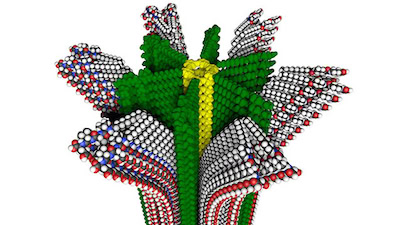Affiliate links on Android Authority may earn us a commission. Learn more.
Hybrid Polymer breakthrough could lead to self-repairing materials

Today’s high-end smartphone customers may whine at the very thought of plastic cases, but in the future plastics may be very much back in fashion, albeit with far more interesting properties than what we are familiar with today. A completely new class of material called a hybrid polymer has been developed by researchers at Northwestern University, which could open the door to a wide range of new practical uses.
The researches envision new materials with properties ranging from self-repairing and regenerating through to strong artificial muscles that can flex and contract. The end result could be synthetic materials that behave in very life-like ways.
“We have created a surprising new polymer with nano-sized compartments that can be removed and chemically regenerated multiple times … Some of the nanoscale compartments contain rigid conventional polymers, but others contain the so-called supramolecular polymers, which can respond rapidly to stimuli, be delivered to the environment and then be easily regenerated again in the same locations.– Samuel I. Stupp, director of Northwestern’s Simpson Querrey Institute for BioNanotechnology.

The breakthrough seems rather versatile and the exact properties possessed by the material depend up its nanoscale structure. In other words, how individual molecules of varying types are structured. This hybrid polymer is formed from two different types, one with strong covalent bonds and supramolecular polymers with weak bonds that contain nano-sized compartments. It is in these compartments that chemists and materials scientists can get to work implementing a wide range of useful features, and, depending on its function, these can even be regenerated by adding small molecules.
“We can create active or responsive materials not known previously by taking advantage of the compartments with weak non-covalent bonds, which should be highly dynamic like living things.” – Stupp
Potential applications include a smart drug patch delivery system with compartments that can be emptied and refilled as needed without having to dispose of the patch, a replenish-able energy source, and even artificial muscles. For gadgets, the technology could also form the basis for self-repairing and even self-assembling materials. This might act something like our skin, healing cuts and scrapes automatically while also offering up a strong protective surface. Of course, none of this comes cheap in the early stages and there is still plenty of research to be done, but it’s a very promising breakthrough.